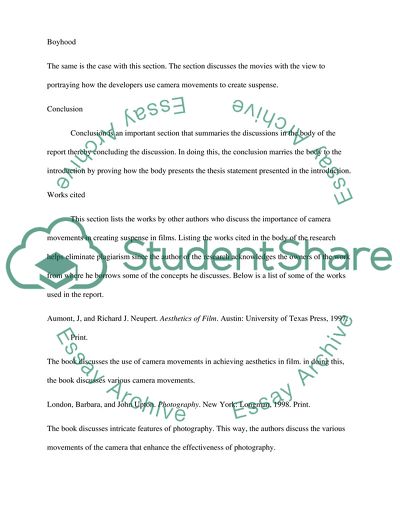Cite this document
(“Camera Movements Research Paper Example | Topics and Well Written Essays - 4000 words”, n.d.)
Retrieved from https://studentshare.org/visual-arts-film-studies/1689342-function-of-camera-movement-in-suspense-movie
Retrieved from https://studentshare.org/visual-arts-film-studies/1689342-function-of-camera-movement-in-suspense-movie
(Camera Movements Research Paper Example | Topics and Well Written Essays - 4000 Words)
https://studentshare.org/visual-arts-film-studies/1689342-function-of-camera-movement-in-suspense-movie.
https://studentshare.org/visual-arts-film-studies/1689342-function-of-camera-movement-in-suspense-movie.
“Camera Movements Research Paper Example | Topics and Well Written Essays - 4000 Words”, n.d. https://studentshare.org/visual-arts-film-studies/1689342-function-of-camera-movement-in-suspense-movie.


